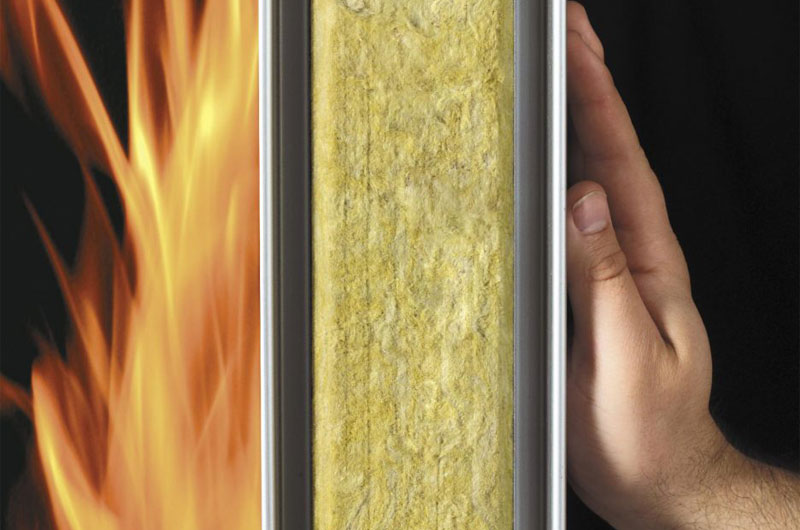In cold storage facilities, fire safety is just as critical, especially in industries such as food processing, pharmaceuticals, and biotechnology, where cold rooms store high-value, temperature-sensitive goods.
The use of fire-resistant materials in cold room construction is essential to safeguard products, protect property, ensure personnel safety, and comply with regulatory standards.
Why Fire Resistance Matters in Cold Rooms
Cold rooms are enclosed spaces with controlled temperatures ranging from below freezing to just above ambient. They typically contain electrical wiring, insulation, refrigeration equipment, and storage systems, each posing unique fire hazards. Despite low temperatures, fires can start due to electrical faults, equipment malfunction, or external sources.
Once a fire breaks out, the insulation and wall materials can either slow its spread or accelerate it, depending on their composition. Many traditional insulation materials are flammable, and without proper safeguards, a minor spark can escalate into a major disaster. Therefore, incorporating fire-resistant materials is essential for:
- Protecting life and inventory
- Minimizing structural damage
- Meeting building codes and safety regulations
- Reducing insurance premiums
- Ensuring business continuity
Key Fire-Resistant Materials Used in Cold Room Construction

Mineral Wool (Rock Wool or Stone Wool)
Mineral wool is one of the most effective fire-resistant insulation materials. Made from basalt rock or slag, it can withstand temperatures over 1000°C without melting. It does not burn, produces very little smoke, and resists the spread of flames.
- Applications: Insulation panels, wall cavities, ceilings
- Advantages: Excellent thermal performance, acoustic insulation, and fire resistance
- Fire Rating: Typically classified as A1 non-combustible (EN 13501-1 standard)
PIR (Polyisocyanurate) Insulated Panels
PIR panels are widely used in modern cold room construction due to their thermal efficiency and improved fire resistance compared to traditional polyurethane (PU) panels. While not completely non-combustible, PIR forms a char layer that slows fire progression.
- Applications: Wall and ceiling panels
- Advantages: Good fire performance, energy efficiency, lightweight
- Fire Rating: Generally B-s1,d0 under EN 13501-1 classification
Fire-Rated Gypsum Board
Gypsum board contains water molecules in its core, which are released as steam when exposed to heat. This slows heat transfer and delays structural failure. Fire-rated gypsum board is often used as internal cladding or in fire barriers.
- Applications: Partition walls, ceilings, fire-rated enclosures
- Advantages: Cost-effective, easy to install, slows fire spread
- Fire Rating: Typically offers 30 to 120 minutes of fire resistance
Intumescent Coatings
These are paint-like coatings that expand when exposed to heat, forming an insulating char layer that protects the underlying material. They are commonly applied to steel structures, wall panels, or doors.
- Applications: Steel beams, doors, wall finishes
- Advantages: Preserves structural integrity, easy to apply, improves aesthetics
- Fire Rating: Up to 120 minutes, depending on application thickness
Calcium Silicate Boards
These boards are highly resistant to fire and are often used in environments where non-combustibility is critical. They are made from silicate and lime with reinforcing fibers, offering strong insulation properties without combusting.
- Applications: Fire barriers, duct enclosures, equipment housing
- Advantages: Moisture-resistant, durable, non-combustible
- Fire Rating: Typically rated A1 non-combustible (EN 13501-1)
Fire-Resistant Doors and Seals
Cold room doors can be weak links in fire safety. Installing fire-rated doors made from steel or composite materials, combined with intumescent seals, ensures the fire compartmentalization of the cold room.
- Applications: Access points, emergency exits
- Advantages: Contains fire within specific areas, enhances occupant safety
- Fire Rating: 30, 60, 90, or 120-minute ratings depending on door design
Fire Safety Standards and Regulations
To ensure compliance and safety, cold room construction must adhere to international and local fire safety regulations. Some key standards include:
- EN 13501-1 (Europe): Fire classification of construction products and building elements.
- NFPA 13/70 (USA): Standards for fire sprinklers and electrical safety.
- FM Global Approval: An international certification indicating materials are tested for fire performance and property protection.
Always choose materials from suppliers who offer certified test results and verified safety documentation. Installers must also follow manufacturer guidelines and ensure all joints, penetrations, and seals meet fire performance requirements.
Integration of Fire-Resistant Design
Fire-resistant construction is not just about materials—it involves a holistic design approach:
- Compartmentalization: Divide large cold storage areas into smaller fire zones with fire-rated walls and ceilings. This limits the spread of fire and simplifies evacuation.
- Redundant Fire Suppression Systems: Use water mist, gas suppression, or dry chemical systems that do not damage stored goods, especially in rooms housing electronics or sensitive products.
- Smoke and Heat Ventilation: Install smoke control systems and fire dampers to manage air movement and prevent toxic buildup.
- Proper Electrical Layout: Ensure cables and equipment meet fire-resistance standards. Use fire-retardant cable trays and encase wiring near refrigeration equipment.
- Fire-Stopping Measures: Seal all gaps, joints, and service penetrations with fire-rated sealants or collars. Even minor gaps can enable fire and smoke to spread quickly.
Benefits of Fire-Resistant Cold Rooms
Investing in fire-resistant materials yields long-term benefits:
- Enhanced Safety: Protects workers and responders during emergencies.
- Regulatory Compliance: Avoids fines, shutdowns, and legal liabilities.
- Asset Protection: Reduces risk of total loss of inventory.
- Insurance Advantages: May qualify for reduced premiums or increased coverage.
- Business Continuity: Minimizes downtime and recovery costs after fire incidents.

